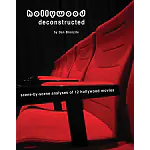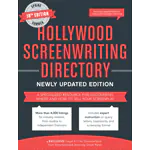Sometimes as writers we get so caught up with developing the crucial elements of a screenplay such as character arcs, plot logic, theme, structure and snappy dialogue that we forget how important it is to write effective scene to scene transitions. Of course, you don’t want this kind of thing to hinder your creative flow but at some point, perhaps the day after writing a scene, or during the first rewrite, I encourage you to pay attention to this stylistic aspect of your screenplay.
You have probably read books or articles in which many screenwriting professionals recommend that you do not include camera directions and musical choices in your script, and for the most part this is true, they should be left for the director, but I do think that sometimes it is acceptable to include these stylistic elements in your script because they help to set the scene, evoke an emotion and reveal your screenwriter’s voice.
Writing an effective scene to scene transition can help crank up the pace or even provide a subtle subtext through sound and visuals that enhance a piece of dramatic script writing.
An example would be these two scenarios:
- A husband and wife argue at home late at night. The wife ends the row by slamming the bathroom door shut. We then cut to the next day and a wide shot of a car factory, within which is the husband, hard at work on the production line.
This example tells the story but how about this alternative:
- Cut from the door slam to a close-up of a hammer hitting a piece of metal. We then reveal the husband working in a car factory pounding a car door.
The second scenario tells the same story but adds impact through the use of transition and carries the undertone of frustration from the end of one scene through to the beginning of another, suggesting that the argument, while over, is not forgotten and is still playing on the husband’s mind. Visually it is also more powerful.
Be innovative with your scene transitions. Dissolve from a ticking clock in one location to a broken clock in another. Cut from a burglar getting away to a barking dog chasing a ball. But remember, don’t get carried away and overuse these stylistic choices because if you try to be too clever with every transition they will start to stick out like a sore thumb and cumulatively have a negative affect on your screenplay. In short, pay attention to detail. This may just be the icing on the cake but is important none the less.




